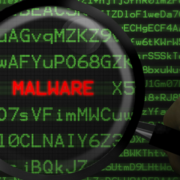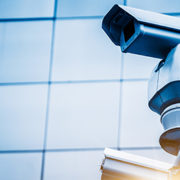5 cyber threats that every school will face
Cybersecurity threats top the list of concerns for businesses across the globe. The problem is not isolated to the business world – K-12 schools are increasingly becoming targets of cyber threats and security breaches. During the fall of 2020, K-12 schools nationwide saw an uptick in some of the worst cyber breaches and ransomware attacks on the public education sector.
Some of the most recent cyber threats against schools attracted government attention, prompting the Senate Homeland Security and Governmental Affairs Subcommittee to explore the issue further.
What are the most common cyber threats to schools?
The following are some of the cyber threats every school should expect to face.
1. Phishing
Phishing attempts involving schools focus on one of three methods: deceptive, spear, and superintendent fraud.
- Deceptive involves using emails sent by what appears to be a legitimate company, asking school personnel to verify their account or information.
- Spear phishing is similar yet more sophisticated in appearing genuine. And it may include information such as the recipient’s name, position, and other professional details.
- Superintendent fraud happens when a fraudulent email, like an official email for a school superintendent, encourages the recipient to share confidential information.
2. DDoS
Distributed denial-of-service attacks happen when multiple systems flood the bandwidth of resources of school servers, making the school’s machines or entire network unavailable. There are cloud-scanning services that can help mitigate this kind of cyber threat.
3. Data breaches
Data breaches occur when secure and confidential information is inadvertently released. Therefore, educating employees on proper security procedures can help mitigate cyber threats.
4. Ransomware
Malicious software that essentially takes a school’s system hostage and restricts access to data is an example of ransomware. Backing up essential data on a server that is not accessible by the school’s main network is the best way to protect against ransomware attacks.
5. IoT vulnerabilities
Internet of Things (IoT) devices in schools include district-owned equipment like security cameras and electronic devices and student or teacher-owned devices like smartwatches. Some of these devices either lack security or are not updated frequently, making them vulnerable to cyber threats.
Remote learning increases the risk of cyber threats
Remote learning – whether part-time with a hybrid model or full-time – increases a school’s vulnerability to cyber threats. As of June 2020, 61 percent of malware encounters happened to schools, according to Microsoft Security Intelligence.
Students and teachers who are engaging in online classrooms are now in a less-controlled cyber environment. As a result, even schools providing students and staff with devices to use cannot completely secure those devices the way they could if they were operating on the school’s servers.
Educating students in the fight against cyber threats
Students are a crucial component in the fight against cyber threats. School districts must commit to educating students if they hope to combat cyber threats moving forward effectively. Teaching students how to protect their devices by regularly updating security software and using unique passwords can reduce school data breaches and other digital risks.
Protecting schools against cyber threats
Network monitoring, robust malware protection, and next-generation firewalls are among the best tools that schools can use against cyber threats. When your school partners with us, it becomes fortified with the best cybersecurity solutions available. Contact us to schedule your no-obligation consultation today.










